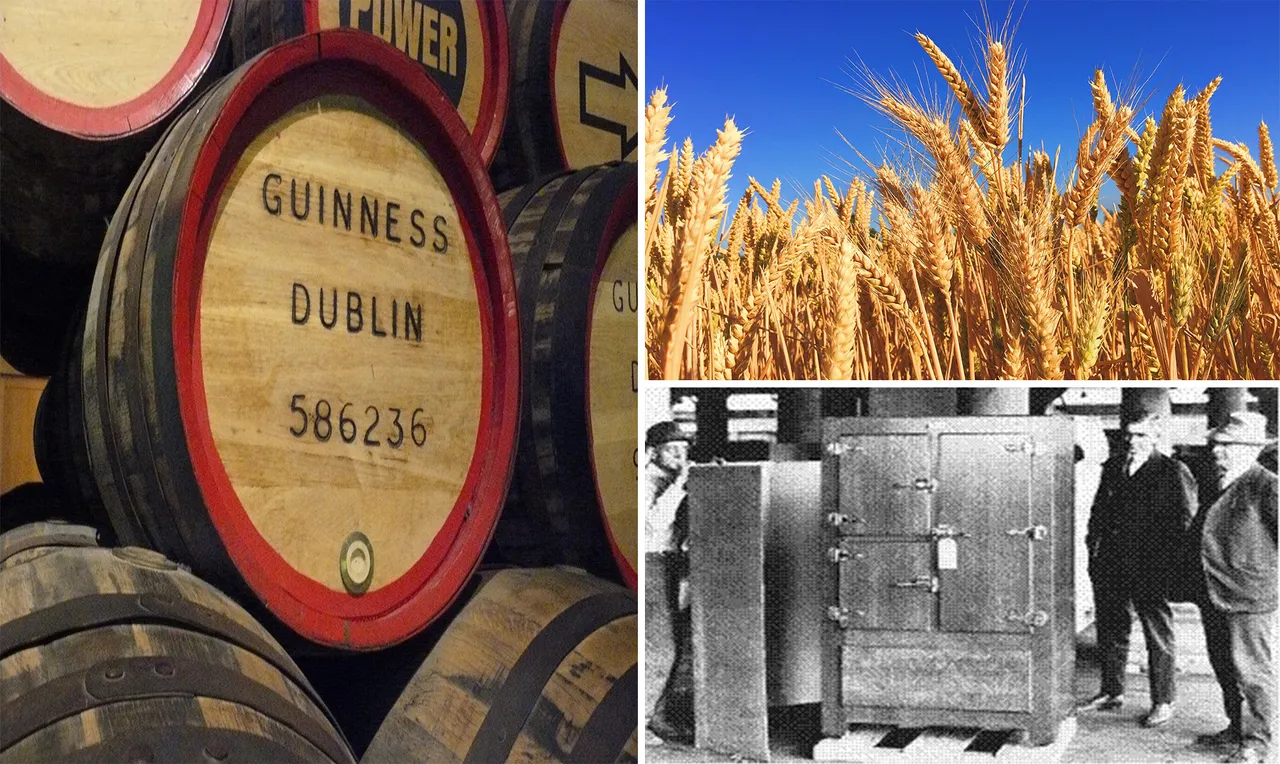
Did you know that beer is one of the oldest drinks made by humans ? And who does not like a good beer on a day of intense heat? Is there something more refreshing than feeling its icy foam and noticing the slight dizziness of happiness?
Yes, we like beer, and because we like it so much, we realized that some of the most significant human inventions could be due to it, in many or in part. Join us to see what it is about.
farming
Agriculture is a milestone in human history, which allowed us to move from nomadic peoples to established peoples. The food no longer had to be chased (hunted, fished) but was enough to sow and harvest it.
We told you at the beginning that beer is the oldest drink. So imagine that the ancient Sumerian nomads , between 9000 and 7000 BC, began their barley plantations in the Mesopotamian region.
It was always believed that the sowing of this grain was for the preparation of bread , but recent studies have thrown lights that give a completely different turn to the use of barley: residues of it were found in ancient vessels, indicating that they drank some beverage made with barley ...
Writing
Another of the most important technologies that the human being has invented and dominated . Before and after writing means pre-history and history . Yes, beer is also involved in this, because the same Sumerians who sowed and harvested, carved pictograms on clay . There they recorded and recorded commercial transactions, but also beer recipes!
Stephen Tinney , an expert in ancient texts at the University of Pennsylvania, discovered that more than 160 cuneiform symbols were associated with beer .
And they needed to record the production of the drink, including wheat beer, that's why there are many tablets alluding to the delicious liquid.
Obviously we can not state categorically that beer had a total influence on the invention of writing, but it is amazing to see that even in remote times there was a need to record at least how it was made. And they used the new invention, writing, to do it.
Pasteurization
Did you know that it was beer (and not milk) that allowed Louis Pasteur to establish the foundations of modern microbiology and the discovery that by heating the liquid at a certain temperature the bacteria were killed ?
In 1876 Louis Pasteur wrote Études sur la bière ( Studies on Beer ), where he captured his research. Having worked as a consultant in some breweries, he wanted to know why beer got bitter. He analyzed the yeast cells and noticed the presence of microorganisms that until that moment were not known, the bacteria .
He showed that they were responsible for the bad smell of the beer and that, through the method that was called, obviously, pasteurization , the bacteria died. The temperature must be between 65 and 70 degrees centigrade, during a certain time, so that the liquids are considered pasteurized.
Refrigeration
You did not know that beer was only made and sold in the cold months . Even for the maturation process, it was required to transport tons of natural ice to underground cellars because there was little thermal variation in these, since specific temperatures were needed.
All this made the drink very expensive. At that time, the Irish brewer Guinness hired the engineer Carl von Linde to develop an artificial refrigeration system , which in the first instance was extremely positive to cool the beer while it was being produced.
It was economized in the transport of the blocks of ice, and it was then possible to sell the cold beer, even if it was hot.
The cooling system not only served to brew beer all year, but it also meant a breakthrough in terms of maintenance and conservation of food throughout the world.
Ph scale
Nowadays it is very common to see on the labels of any product "it maintains the natural Ph", or "with natural Ph". Ph is the potential of hydrogenions , or in other words, the amount of hydrogen ions present in proteins.
At the beginning of the 20th century, the German brewer Carlsberg had a big problem in defining how acidic the beer was, and they used unscientific terminology: "very acid", "good" or "basic" to indicate levels of acidity .
To end this, the Danish chemist Soren Sorensen developed the scale of potential hydrogen ion or Ph. While working in the laboratory of the brewery, Sorensen investigated the effect of ion concentration on proteins, and saw that the more acidic is a drink there is a greater amount of hydrogen ions.
This model, after few revisions, was used all over the world, and now it is essential for any chemical procedure.
As you have seen, beer has often had a preponderant role in several of the most important inventions of the human species.